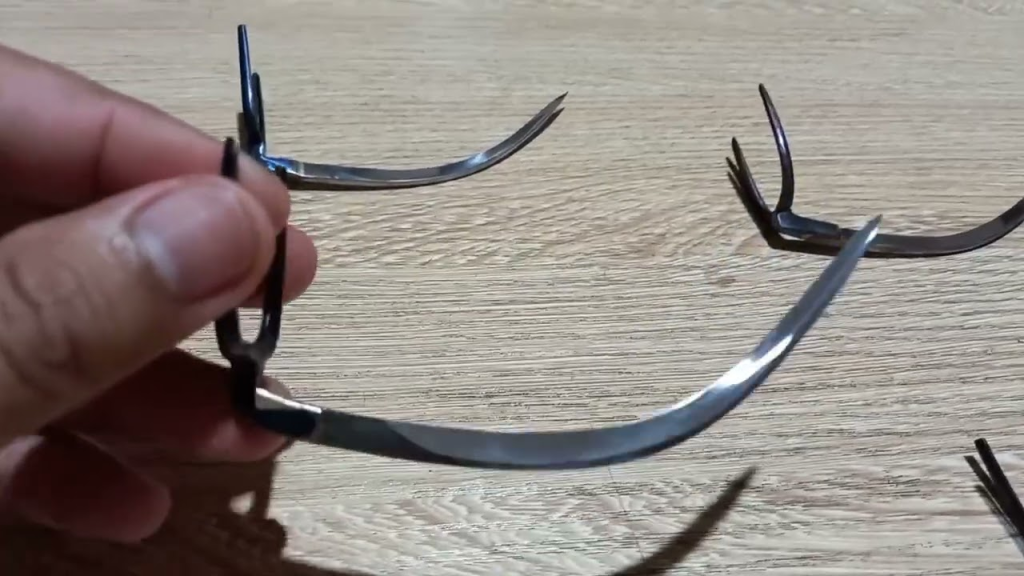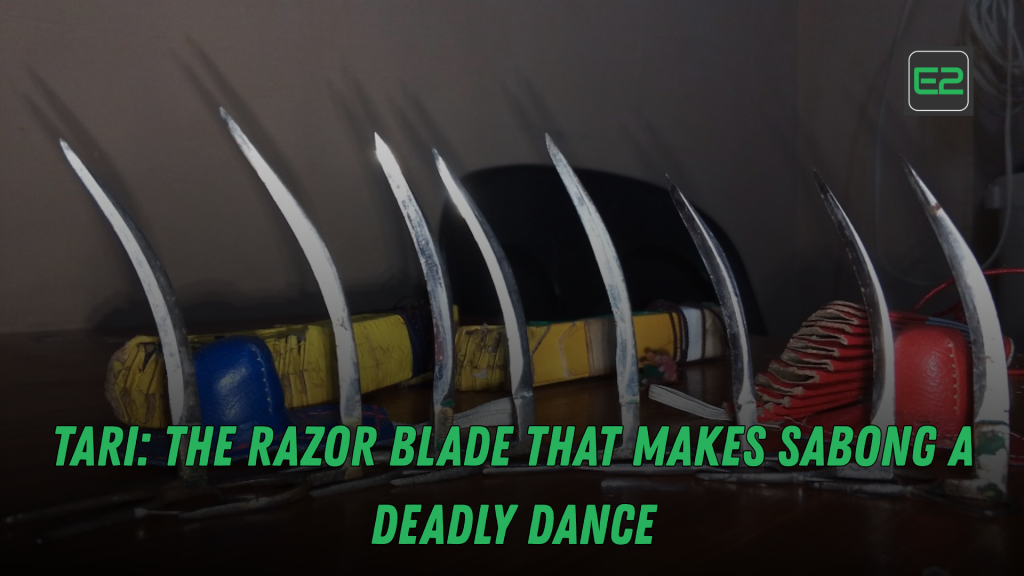Within this fierce competition lies a dark and deadly element—the tari or gaff, or razor blade, a weapon that makes each battle a life-or-death struggle for the combatants. Sabong, or cockfighting, is a centuries-old tradition in the Philippines, where it holds deep cultural significance. For many, it’s more than just a sport; it’s a way of life, a source of entertainment, and sometimes, a means of livelihood. But In this article, we will explore the significance of the gaff , its role in sabong, and the controversy surrounding its use.
Table of Contents
What is Tari in Sabong?
The tari is a razor-sharp blade that is attached to the legs of the roosters used in cockfights. Its purpose is simple but deadly: to inflict damage on the opponent, ultimately determining the winner of the fight. The tari is designed to cause deep cuts that lead to rapid blood loss, weakening or even killing the rooster. It’s a brutal addition to the already intense battle between two gamecocks.
The blade is usually made of steel or other durable materials, and it is carefully secured to the bird’s leg using a strap or a specially designed holder. Once in place, the tari turns the cockfighting match into something far more dangerous, as the birds are now armed with deadly weapons.

The History and Evolution of Tari in Sabong
Origins of Sabong and the Tari
The origins of cockfighting can be traced back thousands of years, with evidence suggesting that it was practiced in ancient civilizations such as India, Greece, and China. In the Philippines, sabong became deeply embedded in the local culture long before Spanish colonization. During the Spanish era, the practice of cockfighting was formalized and became part of Filipino tradition.
As sabong evolved, so did the weapons used in the sport. Early cockfights involved natural claws and beaks, but over time, the use of the gaff became commonplace. The gaff was introduced as a way to intensify the competition and make the outcome more decisive. Its introduction marked a significant shift, turning the sport from a simple contest of strength and agility to a brutal, often lethal confrontation.

How the Tari Changed the Nature of Sabong
The tari, which was initially a small and simple attachment, has evolved into a highly specialized and dangerous weapon. Over the years, cockfighters have experimented with different blade shapes, sizes, and attachment methods to maximize the damage inflicted by the gaff. Modern-day gaff can be incredibly sharp and are designed for quick, lethal strikes that result in rapid blood loss.
While the tari adds a level of intensity to the fight, it also contributes to the controversy surrounding cockfighting. What was once a traditional sport has become a blood-soaked spectacle, drawing criticism from animal rights activists and raising ethical questions about the use of such dangerous weapons in the sport.
The Role of Tari in Sabong
Tari as a Tool of Battle
The tari plays a pivotal role in cockfighting, shifting the focus of the match from just physical strength to a combination of skill, strategy, and the weaponry attached to the roosters. The match is no longer simply about which bird can outmaneuver or overpower the other; it’s also about which bird can land a fatal strike using the gaff.
When the birds are in combat, the blades attached to their legs cause serious damage to their opponent. The blades are sharp enough to slice through feathers and skin, cutting into vital arteries and veins. These strikes can cause rapid blood loss, leading to the incapacitation or death of one of the birds.
Psychological and Strategic Impact
The presence of the tari introduces a psychological element to sabong. The roosters are not only fighting to outmatch each other physically but are also engaging in a battle of endurance and survival. The blade transforms the fight into a deadly dance, where every move counts and every strike could potentially end the match.
For cockfighters, the use of the gaff is part of a larger strategy. Experienced fighters know that the timing and precision of the tari’s strikes are crucial. A well-placed strike can cause a fatal injury, but a poorly executed one can result in a loss. As a result, cockfighting with the gaff requires a great deal of skill, both from the bird and the handler.

Controversy Surrounding the Use of Tari in Sabong
Animal Rights and Ethics
The use of the gaff has drawn sharp criticism from animal rights groups around the world. These groups argue that attaching razor-sharp blades to live animals and forcing them to fight is inherently cruel. The intense bloodshed and potential for injury and death raise serious ethical concerns about the treatment of animals in sabong.
Animal rights activists believe that sabong, particularly when weapons like the gaff are involved, causes unnecessary suffering to the birds. They argue that while cockfighting may be seen as a cultural tradition, it should not come at the expense of the animals’ welfare.
Legal and Regulatory Issues
In the Philippines, cockfighting is legal in designated arenas, known as cockpits, and it is regulated by the government. However, the use of the gaff has raised questions about the safety of the animals involved in the sport. In many cases, cockfighters are required to register their birds and follow specific rules regarding the size and type of gaff used. Still, the practice remains controversial, with some arguing that the government’s regulations do not go far enough to protect the animals.
Internationally, the use of weapons in cockfighting is banned in many countries, and some call for a global ban on cockfighting altogether. However, in regions where the sport remains popular, such as the Philippines, the gaff continues to be an integral part of the culture.
Calls for Reform
In response to growing concerns, some advocates of cockfighting have called for reform. Some suggest that the sport could be made less harmful by introducing safety measures, such as using less lethal weapons or modifying the gaff to reduce the risk of death. Others advocate for the elimination of weapons like the gaff altogether, making the sport more about the birds’ natural abilities rather than their capacity for inflicting damage.
Major Cockfighting Venues in the Philippines: Where the Amazing Action Happens
The Future of Tari and Sabong
Is There a Future for Tari in Sabong?
While sabong continues to be a popular sport in the Philippines, the future of the gaff remains uncertain. The growing awareness of animal cruelty and the increasing demand for ethical treatment of animals may lead to significant changes in how the sport is conducted. Some believe that sabong could evolve into a less violent form of competition, where the focus shifts away from the use of weapons like the gaff and toward a purer form of skill and agility.
A Changing Landscape
As the world becomes more focused on animal rights and welfare, sabong faces the challenge of adapting to these new values. Whether this leads to the elimination of the gaff or a complete transformation of the sport remains to be seen. However, one thing is clear: the role of the gaff in sabong, as well as its cultural significance, is being increasingly questioned by society at large.
A Deadly Dance with a Dark Edge
The gaff is a weapon that has become synonymous with sabong, intensifying the already fierce competition between gamecocks. While it has been an integral part of the sport for centuries, its controversial nature raises ethical questions about the treatment of animals and the role of weapons in traditional practices. As the debate continues, the future of sabong and the gaff remains uncertain, with some calling for reform and others defending it as part of cultural heritage.
Whether you are a supporter of the sport or an advocate for animal rights, it is clear that the tari is a symbol of the darker side of sabong—a deadly dance between two creatures, bound by tradition but torn apart by violence.
Frequently Asked Questions (FAQs)
1. What is a tari in cockfighting?
The tari is a razor-sharp blade attached to the legs of roosters in cockfighting, used to inflict damage and determine the winner of the fight.
2. Why is the tari controversial?
The tari is controversial due to concerns about animal cruelty, as it causes severe injuries and even death to the roosters involved.
3. How has the tari evolved over time?
Initially simple, the tari has become more specialized and deadly, with various sizes and designs used to maximize damage in cockfights.
4. Is sabong legal in the Philippines?
Yes, sabong is legal in the Philippines, but it is regulated by the government. There are specific rules surrounding the use of weapons like the tari.
5. Can sabong be made safer for the animals?
Some advocates suggest reforms, such as using less lethal weapons or eliminating the tari altogether, to make sabong less harmful to the roosters involved.
